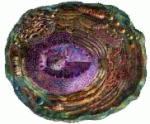Cell Biology
|
19 november 2014 05:50:27 |
| Biosynthesis of ß-carotene in engineered E. coli using the MEP and MVA pathways (Microbial Cell Factories) |
|
Tweet Background:
?-carotene is a carotenoid compound that has been widely used not only in the industrial production of pharmaceuticals but also as nutraceuticals, animal feed additives, functional cosmetics, and food colorants. Currently, more than 90% of commercial ?-carotene is produced by chemical synthesis. Due to the growing public concern over food safety, the use of chemically synthesized ?-carotene as food additives or functional cosmetic agents has been severely controlled in recent years. This has reignited the enthusiasm for seeking natural ?-carotene in large-scale fermentative production by microorganisms.
Results:
To increase ?-carotene production by improving the isopentenyl pyrophosphate (IPP) and geranyl diphospate (GPP) concentration in the cell, the optimized MEP (methylerythritol 4-phosphate) pathway containing 1-deoxy-D-xylulose-5-phosphate synthase (DXS) and isopentenyl pyrophosphate isomerase (FNI) from Bacillus subtilis, geranyl diphosphate synthase (GPPS2) from Abies grandis have been co-expressed in an engineered E. coli strain. To further enhance the production of ?-carotene, the hybrid MVA (mevalonate) pathway has been introduced into an engineered E. coli strain, co-expressed with the optimized MEP pathway and GPPS2. The final genetically modified strain, YJM49, can accumulate 122.4?6.2?mg/L ?-carotene in flask culture, approximately 113-fold and 1.7 times greater than strain YJM39, which carries the native MEP pathway, and YJM45, which harbors the MVA pathway and the native MEP pathway, respectively. Subsequently, the fermentation process was optimized to enhance ?-carotene production with a maximum titer of 256.8?10.4?mg/L. Finally, the fed-batch fermentation of ?-carotene was evaluated using the optimized culture conditions. After induction for 56?h, the final engineered strain YJM49 accumulated 3.2?g/L ?-carotene with a volumetric productivity of 0.37?mg/ (L???h???OD600) in aerobic fed-batch fermentation, and the conversion efficiency of glycerol to ?-carotene (gram to gram) reached 2.76%.
Conclusions:
In this paper, by using metabolic engineering techniques, the more efficient biosynthetic pathway of ?-carotene was successfully assembled in E. coli BL21(DE3) with the optimized MEP (methylerythritol 4-phosphate) pathway, the gene for GPPS2 from Abies grandis, the hybrid MVA (mevalonate) pathway and ?-carotene synthesis genes from Erwinia herbicola. |
| 153 viewsCategory: Microbiology, Cell Biology |
 Dissecting and engineering of the TetR family regulator SACE_7301 for enhanced erythromycin production in Saccharopolyspora erythraea (Microbial Cell Factories) Dissecting and engineering of the TetR family regulator SACE_7301 for enhanced erythromycin production in Saccharopolyspora erythraea (Microbial Cell Factories)Tuning constitutive recombinant gene expression in Lactobacillus plantarum (Microbial Cell Factories) 
|
| blog comments powered by Disqus |
MyJournals.org
The latest issues of all your favorite science journals on one page
The latest issues of all your favorite science journals on one page



